Related Research Articles

Ricardo Bofill Leví was a Spanish architect from Barcelona, Spain. He founded Ricardo Bofill Taller de Arquitectura in 1963 and developed it into a leading international architectural and urban design practice. According to architectural historian Andrew Ayers, his creations rank "among the most impressive buildings of the 20th century."

The art of motion-picture making within Spain or by Spanish filmmakers abroad is collectively known as Spanish Cinema.

Vicente Aranda Ezquerra was a Spanish film director, screenwriter and producer.
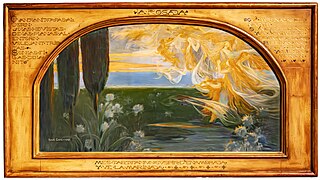
Adrià Gual i Queralt was a Catalan playwright and theatre businessman, founder of the Escola Catalana d'Art Dramàtic and a pioneer of cinema in Barcelona.

Carles Santos was a Spanish artist who began his career as a pianist and later worked in many other creative disciplines, including musical composition, filmmaking, screenwriting, acting, scenic musical shows, graphics, montage, sculpture, photography, poetry, and prose.
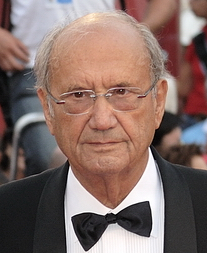
Pere Portabella i Ràfols is a Spanish politician, director, and producer. In 1977, he was elected Senator in Spain's first democratic elections and participated in the writing of the Spanish Constitution. As a filmmaker, his style is experimental, reaching new aspects of film language, often with a poetic tone and social content. Portabella is hailed as an iconic figure in Spanish film.
Domènec Balmanya i Perera, also referred to as Domingo Balmaña, was a former Spanish football midfielder and manager who spent most of his playing career at FC Barcelona. As a manager, he guided CF Barcelona to the a Copa del Generalísimo win in 1957. He then had moderately successful spells at Valencia CF, Real Betis and CD Málaga before he guided Atlético Madrid to a La Liga title in 1966. He subsequently managed Spain between 1966 and 1968. After retiring as a coach he worked as a director of sport at both RCD Espanyol and FC Barcelona and as a director at a Catalan coaching school. He also worked as a radio commentator.

The Bilingual Lover is a 1993 Spanish film, written and directed by Vicente Aranda and adapted from a novel by Juan Marsé. The film stars Imanol Arias, Ornella Muti and Loles León. The film is a grotesque drama, with some elements of comedy. Set in Barcelona in the 1980s, El Amante Bilingüe takes an ironic approach to Catalan linguistic policies, nationalism and eroticism with a pattern of double identity that was based on elements from the author's life.

The Girl with the Golden Panties is a 1980 Spanish film directed by Vicente Aranda and released through Morgana Films. It stars Victoria Abril and Lautaro Murúa. The plot follows a middle-aged writer as he is visited by his niece and her friend in hopes to cover a highly fabricated memoir he is writing, and he is caught up in their game of seduction as his lies are unraveled. The film was based upon the novel of the same title by Catalan author Juan Marsé.
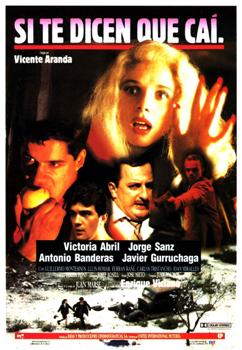
If They Tell You I Fell is a 1989 Spanish film written and directed by Vicente Aranda, starring Victoria Abril and Jorge Sanz along with Antonio Banderas and Javier Gurruchaga. It is an adaptation of the novel of the same title by Juan Marsé, which was based on the killing of Carmen Broto. Set mostly in the old quarter of 1940s Barcelona, the film centers in a young rag and bone merchant who falls in love with a prostitute. If They Tell You I Fell has an intricate narrative in which real and imagined stories blend in a crosswords style.

The Exquisite Cadaver AKA: The Cruel Ones is a 1969 Spanish film noir psychological thriller film directed by Vicente Aranda, based on the short story Bailando Para Parker written by Gonzalo Suárez. The plot follows a well-to-do publisher and family man who begins to receive severed body parts in the mail two years after his mistress committed suicide. Along with one of these bloody parcels is a letter of blackmail from the dead woman's former lesbian lover, who seeks vengeance.

Promising Future is a 1965 Spanish film directed by Vicente Aranda and Román Gubern. Set in Neorealism style, the plot was inspired by F. Scott Fitzgerald's the Great Gatsby. Starring Germán Cobos and Italian actress Serena Vergano, it was shot in 35 mm in black and white in Castelldefels, Sitges and Barcelona.
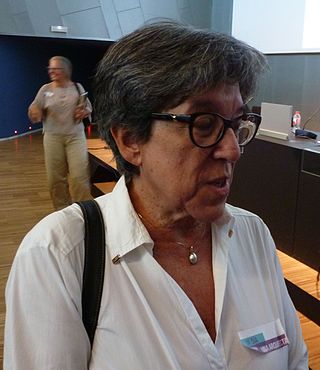
Anna Bofill Leví is a Catalan Spanish pianist, architect and composer.
Serena Vergano born Adalgisa Serena Maggiora Vergano , is an Italian actress. She was the muse of the Barcelona School of Film, acting in many of the films of this movement.

Isabel Steva i Hernández, whose pseudonym was Colita, was a Spanish photographer. She trained with Xavier Miserachs i Ribalta, and began her professional career in 1961 as a laboratory technician and stylist for Miserachs.
Nocturn 29 is a 1968 avant-garde experimental Catalan film in Spanish directed by Pere Portabella i Ràfols and starring Lucia Bosè (Lucía) and Màrius Cabré (Mario). It is a prime example of the Barcelona School of Film.
Emilio Bofill Benessat, in Catalan Emili Bofill i Benessat (1907–2000) was a Spanish builder with a strong background in architecture. He has been described as "the constructor whom every architect wanted to build their work."
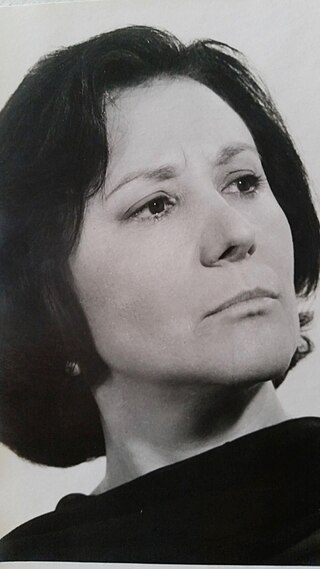
Teresa Cunillé i Rovira is a Spanish actress with a long career in stage and film.